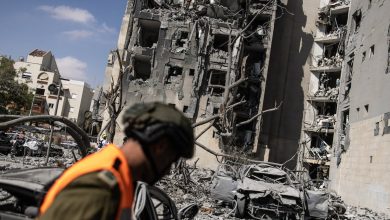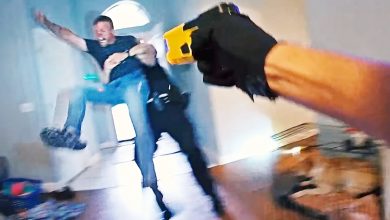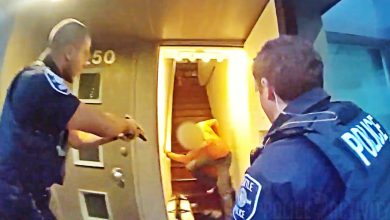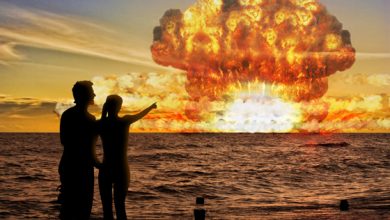US Army punches the gas on Next-Gen Command-and-Control
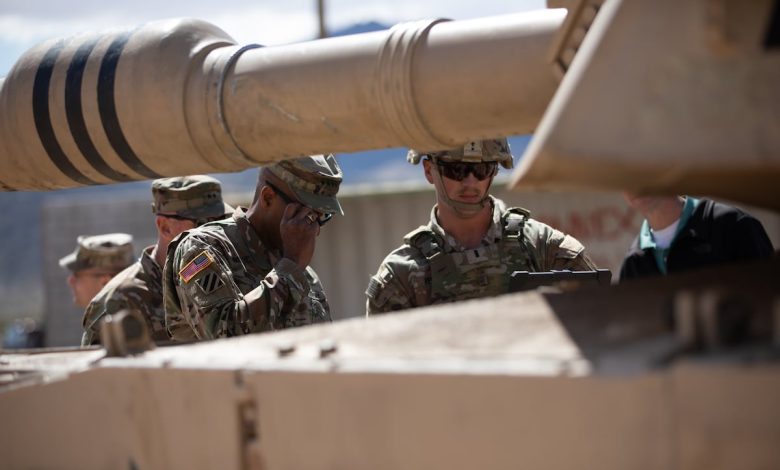
Coming out of an entire career in the operational Army, Maj. Gen. Patrick Ellis, now the director of the Army’s command-and-control modernization, said it hasn’t been uncommon in the field to see critical data jotted down on a piece of cardboard in the back of a platoon sergeant’s tank.
“There’s probably a headquarter somewhere today at an exercise where an intel officer is going to write everything down on a piece of sticky note that came out of his intel system, walk across the [Tactical Operations Center], hand it over to the fires guy who has to type it into the fires system to make it work,” he said in a Monday press briefing at the Pentagon. “We realize this is just not the approach to speed that we need in the United States Army.”
The Army’s command-and-control, or C2, architecture, which enables commanders to plan, decide and executive missions, was cobbled together over 20 years during the Global War on Terror. Most warfighting functions used separate stove-piped systems, amounting to a total of 17 programs of record, according to Alex Miller, the Army’s chief technology officer.
“We had built up a lot of technical debt and process debt,” Miller said during the briefing. “As technology evolved and as commercial industry really got into the edge processing game and data analytics and cloud, we had processes in place that didn’t allow us to change fast,” Miller said, calling it “60 years of policy archeology.”
Army Chief of Staff Gen. Randy George recognized getting command-and-control right was imperative to future battlefield success and decided to embark on a program to fix the service’s C2 capabilities to avoid operational disruption while creating the necessary clean-sheet system from scratch.
The Army’s effort to overhaul its command-and-control ecosystem, dubbed Next-Generation C2, is one of the top priorities for Army modernization — if not the highest.
“If you cannot command and control your formation, nothing else matters,” Army Futures Command commander, Gen. James Rainey said last week at the Association of the U.S. Army’s Global Force Symposium in Huntsville, Alabama.
‘Astronomically fast’
A year ago at the National Training Center at Fort Irwin, California, soldiers at the Army’s experimentation event Project Convergence and industry partners, including Google, Anduril and Palantir, demonstrated a proof-of-concept at the unclassified level for what a Next-Generation C2 system, or NGC2, might look like.
Walking through a cluster of adobe buildings and pitched tents in a quiet desert village in the middle of the Mojave Desert, George saw commanders and unit leaders using just a laptop or tablet and headset to communicate, plan, conduct reconnaissance and targeting and execute fires operations.
Using just their vehicles as operations centers, the units decreased both their signature in the electromagnetic spectrum and Tactical Operations Centers footprints, which typically stick out like sore thumbs, and planned and executed their missions more efficiently.
Then the service took the capability to another experimentation exercise called NetModX in September.
“We took that commercial architecture, the software side of that, the data flow inside of that, put it on real Army systems, on the real radios that we have or might want, satellites, all that. Ran that system, jammed them, knocked people off of it, tested it,” Ellis said.
Fast-forward to Project Convergence, held earlier this spring at the National Training Center. There, the Army gave the capability to an entire armored battalion, put it in a brigade headquarters and had real soldiers employing the technology.
“There wasn’t an Army of contractors following vehicles around,” Ellis noted. “The soldiers were actually using a lot, really quality feedback there.
For instance, Ellis said that he climbed on top of a tank for 45 minutes talking to soldiers using NGC2. They showed how they could flip through intelligence, surveillance and reconnaissance feeds, examine vehicle maintenance data and supplies status and make better decisions in real time.
“Climbing off that tank I realized we hadn’t once talked about how complicated it was to access that data, how hard it was to log in, the transport problems they were having,” Ellis said. “We were talking about what they’re actually doing with the data, which is exactly what our goal is.”
The Army took one year to go from a proof-of-concept to capability validation, a timeline Miller called “astronomically fast.” Normally, such a process would take five to seven years, he said.
“We went from characterization of need with industry, government and industry together, to things in the hands of soldiers that I am actually pretty confident that if war broke out tonight, they could use in real-time.”
Logging in
The Army has now enabled a process through a software acquisition strategy to try and buy commercially available technology more agilely. The service has also moved away from giving industry a set of rigid requirements to adhere to when developing a capability to, instead, provide them with a problem and a short, broad statement outlining the Army’s needs.
Industry has already helped significantly to shape the effort.
“We’re not just talking about stovepipes anymore,” Ellis said, “We’re actually talking about how to approach it from a whole stack, everything from software, the applications, all the way down to the data transport layer.”
A major part of the effort is developing an integrated data layer on which the service can build applications over the top, according to Ellis. Like applications on smartphones, the Army’s systems can use that same data. Rather than relying on “complicated spaghetti charts” to flow data, an integrated data layer puts data all in one place, Ellis said.
The service will soon release a request to industry for solutions that will filter into its brand new, clean-sheet approach to Next-Gen C2 to build on the progress made over the last year and begin to scale the capability across the operational force, Lt. Gen. Rob Collins, the military deputy to the Army’s acquisition chief, said. The Army will never stop iterating its C2 capability going forward and will rely heavily on soldier feedback to build the system, he noted.
The major endeavor also presents an opportunity for the service to work differently with industry, Joe Welch, the deputy to the Army Futures Command commander, said during Monday’s media briefing.
“We’re moving away from this concept of an industry integrator into more of a team of teams, but on our side, we need to be a better customer. It’s not just handing industry a problem statement and then walking away, waiting for them to deliver and then holding them accountable if they don’t,” Welch said. “That partnership means that we need to understand where we have shared incentives, where we have different incentives and then kind of acknowledging those directly and understanding how to work through that.”
The Army plans to scale the system to an entire division by the next iteration of Project Convergence, expected to take place in the summer of 2026. The Army chief has charted the developers to field to both a division and corps.
While the service typically takes about five years to field a capability to the entire Army, Miller said once the first division gets the core software and data pieces that will be cloud-based, multiple divisions will be able to log in at the same time.
The Army also plans to use funding freed up by ending legacy capabilities to pay for Next-Gen C2 to the tune of “billions of dollars,” Welch said.
“There’s no room for things that won’t win,” Miller said. “Being able to stop and adjust and use the money that taxpayers gave us more efficiently, that’s the name of the game. That’s how we’re going to pay for Next-Gen C2.”
Jen Judson is an award-winning journalist covering land warfare for Defense News. She has also worked for Politico and Inside Defense. She holds a Master of Science degree in journalism from Boston University and a Bachelor of Arts degree from Kenyon College.


